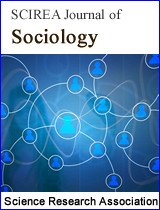The Body-Mind Problem in Psychoanalytic Treatment Technique
DOI: 10.54647/sociology841461 38 Downloads 15722 Views
Author(s)
Abstract
In recent times, many publications have emerged that deal with the importance of implicit communication in the therapeutic relationship. (Bürgin 2022, Doering 2022, Leikert 2019, Müller -Jung 2024) They assume that success or failure is largely due to the handling of this event. The Saarbrücken researchgroup has shown empirically that this is a valid assumption (Krause 2006). Since communication always requires at least two people, the implicit activities of the therapist are also theoretically increasingly given weight. This was done under the concept of countertransference (Klein 1952), projective identification (Ogden 1979) and the bipersonal field (Baranger M &W 2022) . In my own writings and research, I had set up a model of the relationship process in which I had distinguished the channels of hearing, smell, sight, touch and warmth-sensation and had assigned them to the behavioral classes, Peaking , body movements, affect display and body movements. What has been neglected so far were the therapist's own body perceptions, such as proprioception, afferents , efferent and efferent copies. Finally, the importance of smells was only dealt with very marginally, although they obviously play a major role in implicit communication. This article aims to show that they make the decisive contributions to countertransference. The integration of the different perceptions is made using this behaviour. In addition, both patients and therapists seem to show extraordinarily large interindividual differences in the ability to perceive such sensory perceptions without noticing themselves.
Keywords
implicit communication, psychoanalytic process smell
Cite this paper
Rainer Krause, Hardy Maas,
The Body-Mind Problem in Psychoanalytic Treatment Technique
, SCIREA Journal of Sociology.
Volume 9, Issue 4, August 2025 | PP. 282-292.
10.54647/sociology841461
References
| [ 1 ] | Bischof, N: (1966) Epistemological Foundations of Perceptual Psychology, in: Metzger and Erke (eds.), Handbuch der Psychologie Bd. 1, Göttingen, Hogrefe, pp. 27-78 |
| [ 2 ] | Bürgin, D.: (2022) The Vitality of the Preverbal Psyche. Psychoanalytic concepts about the unconscious: the sovereign and the work in the undeveloped. Frankfurt Brandes & Apsel. |
| [ 3 ] | Doering, S.(2022) Resonance – Encounter – Understanding. Implicit Communication in the Therapeutic Relationship, Stuttgart, Klett, Cotta. |
| [ 4 ] | Baranger, M. & W. (2018): The Analytical Situation as a Dynamic Field. Psyche, 72. 739-784 |
| [ 5 ] | Fonagy, P.,Target, M., Gergely, G.(2000) Attachment and borderline disorder. A theory and some evidence. Borderline Person Disorder. 23. 103-22 |
| [ 6 ] | Klein, M. (1930) The Importance of Symbol Formation for the Development of the Ego, International Journal of Psychoanalysis.57-72 |
| [ 7 ] | Krause, R. (1981): Language and Affect. Stuttering and its treatment Stuttgart Kohlhammer |
| [ 8 ] | Krause R (1997) Allgemeine psychoanalytische Krankheitslehre, Bd. 1 Grundlagen Stuttgart Kohlhammer |
| [ 9 ] | Krause, R. (2003): Overview of Emotion Pychology. In: Herpetz- Dahlmann, Resch, Schulte-Merwort, Warnke (eds.): Developmental Psychiatry, Biopychological Foundations and the Development of Mental Disorders. Stuttgart, Schattauer, 105-114. |
| [ 10 ] | Krause R. 2006) Drive and affect in perverse actions. In : Fonagy, Krause, Leuzinger- Bohleber (EDS). Identity, Gender and Sexuality. London. International Psychoanalytic Association161- 176. |
| [ 11 ] | Krause, R (2009): Disgust and the Body in Analytical Psychotherapy, in: Vogt(ed.): Ekel als Folge traumatischen Erfahrungen (Ekel). Psychodynamic Foundations and Studies, Psychotherapeutic Settings, Case Studies, Giessen, 15-28 |
| [ 12 ] | Krause, R. (2012): General Psychodynamic Treatment and Disease Theory. Stuttgart Kohlhammer |
| [ 13 ] | Krause R. (1922): How can one still analyze in the face of Covid 90? Some very personal reflections of an old hand. Lecture at the annual congress of the German Psychoanalytic Society Munich 1922 |
| [ 14 ] | Müller-Jung J. (2024) A Feast of the Senses . Smelling is making a career in medicine and the K I world. Scents are teleported, olfactory therapies are promised. |
| [ 15 ] | Krause R (2016) In Search of the Missing Link between Analyst and Analysand, Their Bodies and Their Common Soul In Nohr and Leikert, S. (Eds): On the Phenomenon of Emotion in Psychoanalysis and Music. Giessen Psychosozial Verlag 61- 74 |
| [ 16 ] | Leikert, S. (2019) The Sensual Self: Body Memory in Psychoanalytic Treatment Technique. Gießen Brandes and Apsel |
| [ 17 ] | Morgenthaler, F. ( 1974) The position of perversions in metapsychology and technology. Psyche, 12.1077-1098 |
| [ 18 ] | Moser, U. (2013) Theory of Defense Processes. Giessen, Brandes and Apsel |
| [ 19 ] | Ogden, Th. (1979) On projective Identification, The International Journal of Psychonanalsis,357-373K |
| [ 20 ] | Rass, E. Spitzer, C. & Schore, A.N. (2017) Attachment, Attachment Trauma and Dissociation. In: Henn und Spitzer (eds): Dissociative Disorders of Consciousness. Basics of Clinic Therapy Stuttgart Schattauer, 61-94. |

